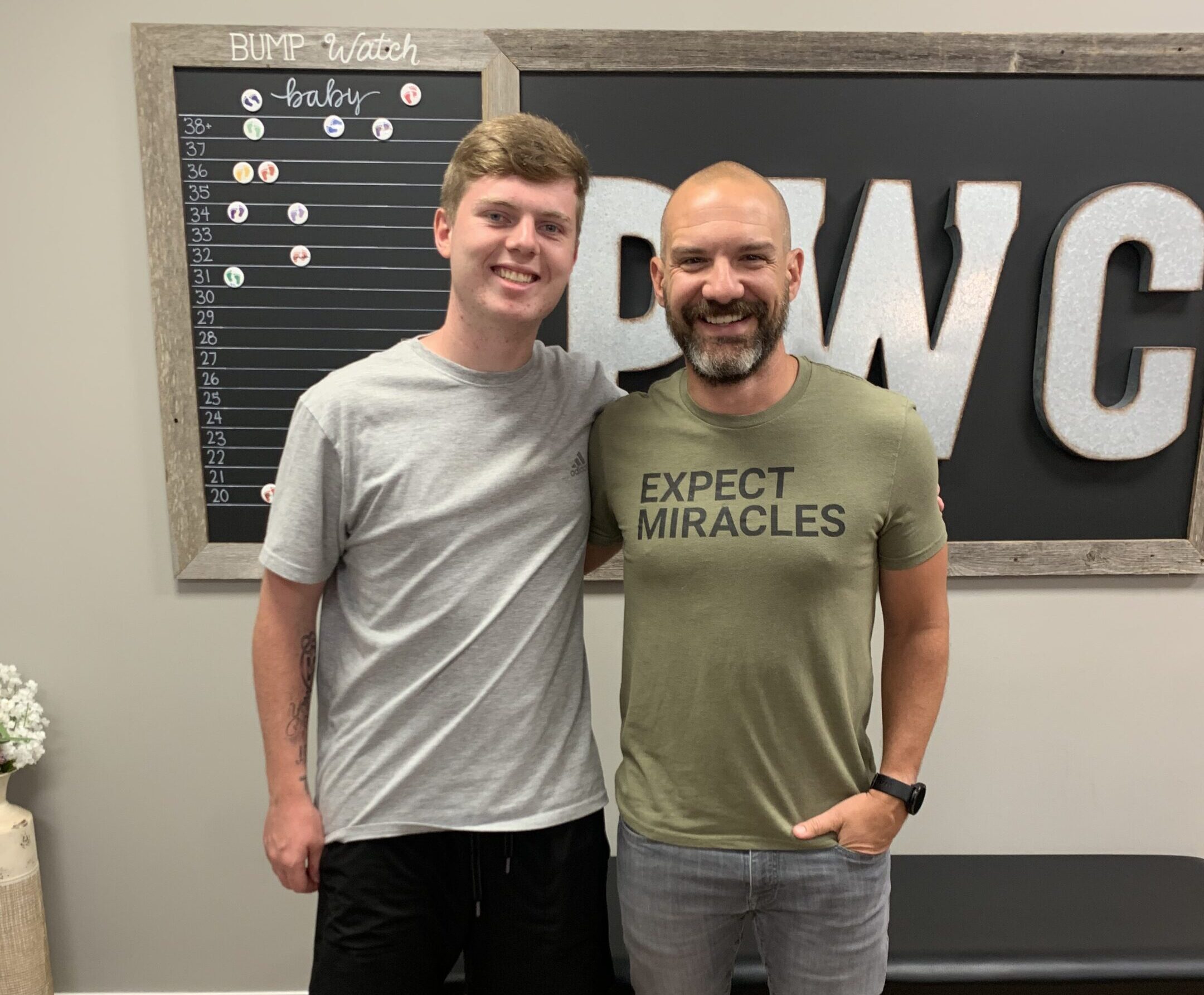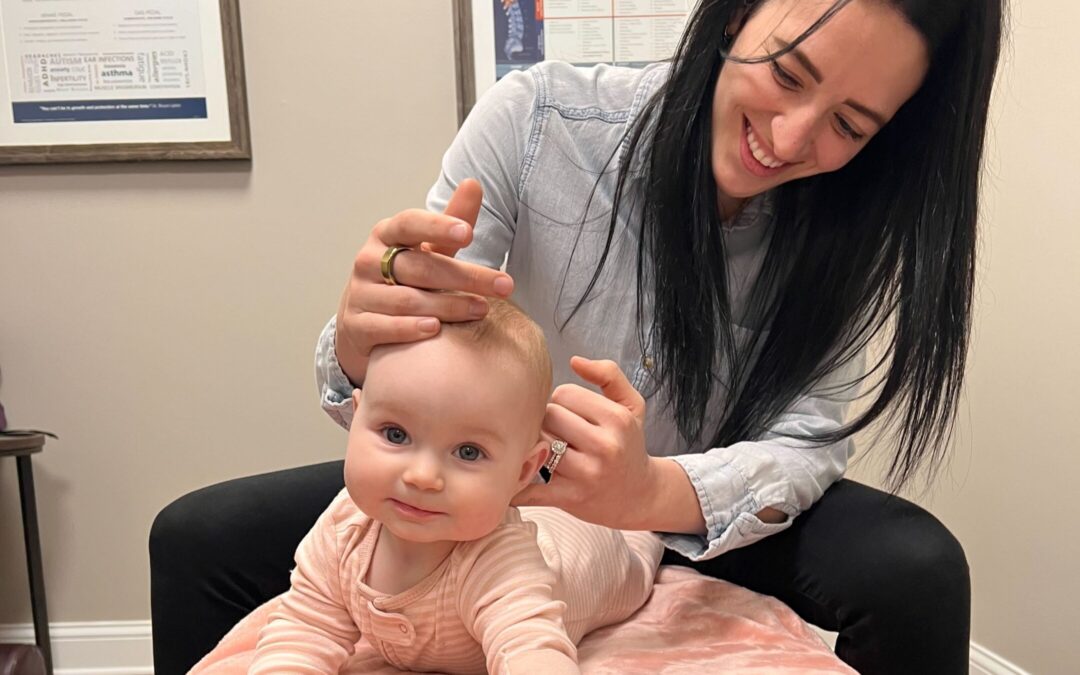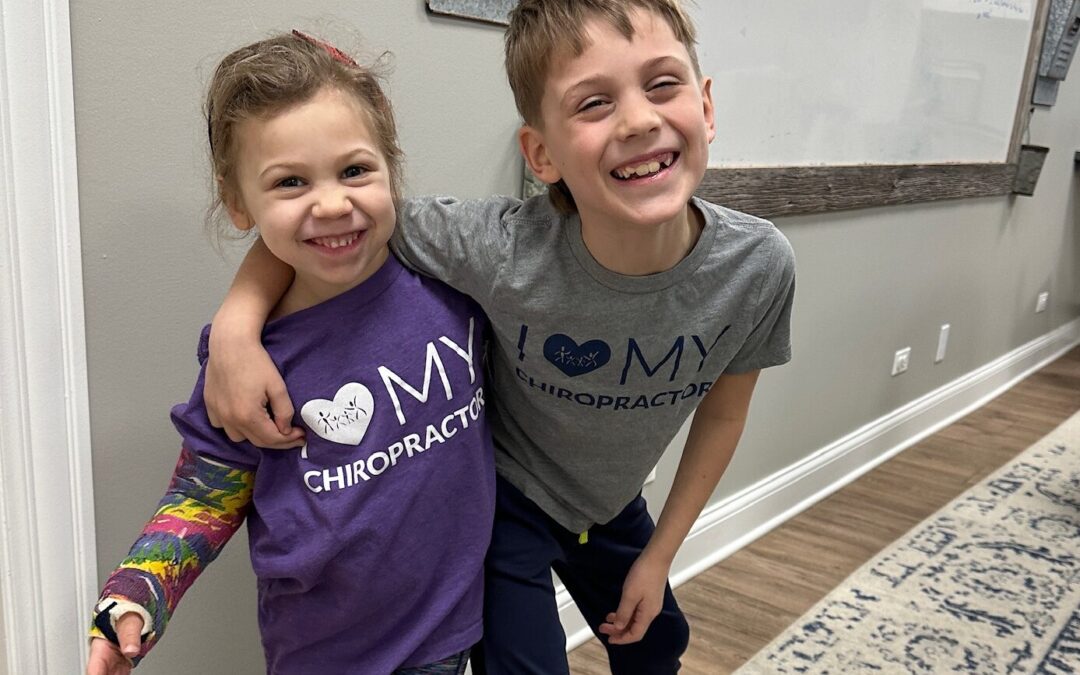Cole’s family was engulfed by a mix of emotions – loneliness, fear, and despair. Their hearts ached as they witnessed his relentless battle with severe health issues at the tender age of 19. Devastating grand mal seizures and depression cast a dark cloud over the vibrant life he so deserved.
The magnitude of Cole’s seizures, which would trigger terrible convulsions, had reached an alarming point. Following his most intense episode, he bore a black eye, and there was a hole left in the wall of their home from the fall and physical trauma his convulsions caused. They worried for his safety in more ways than one and were exhausted because, despite trying everything, nothing helped alleviate his suffering.
They consulted neurological specialists, explored different medications, CBD oil, supplements, functional medicine, and stuck to a restrictive diet, yet Cole was still struggling. This cycle continued until a glimmer of hope emerged through the discovery of a chiropractic intensive program. Intrigued by the prospects of Neurologically-Focused Chiropractic, they turned to it for help.
What Are Convulsions?
A convulsion describes the involuntary action of jerking and contraction and is a neurological occurrence characterized by the disruption of nerve cell activity in the brain. This disruption leads to involuntary muscle contractions and spasms, resulting in abrupt, violent, and erratic movements of the body.
Various medical conditions can be linked to convulsions, such as epilepsy, head injuries, severe fevers, inflammatory brain infections, exposure to toxins, functional neurological disorders, and certain medications. Convulsions can happen to individuals of any age group, from infants to older adults.
The terms convulsion and seizure are often used interchangeably, but they actually refer to distinct physiological events. A seizure arises from an electrical disruption in the brain. In contrast, a convulsion specifically describes the involuntary jerking and contraction of muscles during the disruption – which can lead to severe injuries.
It’s important to note that it’s possible to experience an epileptic seizure without convulsions. Likewise, convulsions can occur without the presence of epilepsy, which is a chronic neurological condition. In simpler terms, the occurrence of convulsive episodes does not definitely indicate the presence of epilepsy.
What Are the Symptoms of Convulsions?
Recognizing when someone is having a convulsion is generally apparent. These episodes can manifest in various ways, either involving the entire body or being localized to a specific part, like an arm or leg. The duration of a convulsion can range from a brief few seconds to a prolonged period, thereby amplifying the potential for injury.
The appearance of a convulsion primarily hinges on the underlying cause and specific region of the brain and nervous system that is impacted. Several potential characteristics may accompany a convulsion, including:
- Involuntary spasms or jerking
- Sudden shaking of the entire body
- Whole-body rigidity
- A clenched jaw
- Confusion
- Drooling
- Loss of bowel or bladder control
- Gagging or gaps in breathing
- Near or total loss of consciousness or a brief blackout
What Causes Convulsions?
The underlying cause of convulsions involves misfirings of nerve cells in the brain, and disruptions in neurological communication pathways from the brain to the body. The severity and extent of the convulsion depend on the specific area of the brain and nervous system that are affected, and how significant or severe the trauma or toxins that caused the neurological dysfunction in the first place.
As mentioned, convulsions are believed to be triggered by various factors such as traumatic injuries, illness, medication reactions, or other conditions. And in a lot of cases, the traditional medical world is unsure of what the causes may be, thus often using the word “idiopathic” to show that they don’t know what’s causing or triggering the convulsions.
Convulsions can be a reaction to a single neurophysiological event. A convulsion caused by a fever is called a febrile convulsion and usually occurs in infants and children who have a sudden spike in body temperature. The temperature change can be so rapid that you may not even be aware of the fever until the convulsion occurs.
Epilepsy is a chronic neurological condition that involves recurring seizures not caused by another known condition. There are many types of seizures, but a grand mal seizure, such as Cole’s, is a type that usually involves convulsions.
There are quite a few illnesses or conditions that convulsions may stem from, which include the following:
- Fever/Febrile Convulsions
- Epilepsy
- Any illness or injury involving the brain and central nervous system
- Diabetic Ketoacidosis
- Sepsis
- Stroke
- Severe Electrolyte Imbalance
- Acute Kidney Failure
- Meningitis
- Pediatric Celiac Disease
- Side Effect of Certain Medications
Since disruption and dysfunction of neurological communication between the brain and the body create convulsions, the question we need to ask is – what is the root cause of the neurological dysfunction in the first place?
A lot of times, traditional medical doctors think that things like convulsions and seizures are brain-based problems only, and overlook the role that the brainstem, spinal cord, and spinal nerves can play in these conditions. As Neurologically-Focused Chiropractors, the brain is not the only part of the body we should be looking at, since it is only one part of the central nervous system.
Looking Beyond Just the Brain
The Central Nervous System is the system that acts as air traffic control for the entire body, controlling and regulating every other tissue, organ, and cell. The brain is directly and intimately connected to the brainstem, spinal cord, and sensory nerves that travel from the neurospinal system back and forth to the muscles, tissues, organs, and glands. This disrupted brain-to-body communication is called subluxation.
A correlation we have found in nearly every single case of convulsions we’ve seen clinically in the past has been a case history that includes significant stress during the prenatal period, as well as a birth intervention, such as c-section, forceps or vacuum, that likely led to trauma and injury to the brainstem, vagus nerve, and central nervous system.
Additionally, the majority of convulsions and seizure cases we continue to see clinically have case histories that also include reactions to medications and/or vaccinations in the first two (2) years of life, indicating that their nervous system has a hard time dealing with toxins.
When the central nervous system is exposed to significant physical or chemical stress, especially early in life, it shifts into an excessive sympathetic (fight or flight) response. Convulsions and seizures are both highly correlated with these sorts of imbalances in the central or autonomic nervous system, and a condition known as dysautonomia.
While this section has a lot of complex terminologies, it’s really quite simple to put things together when you see them listed in numerical order, just like we do in the majority of case histories for kids struggling with convulsions, seizures, and other neurological disorders. That common case history looks like this:
- Multiple exposures to stress and toxins early in life (prenatal stress, birth intervention, and trauma, adverse reactions to medications or vaccinations, etc.)
- Subluxation and sympathetic dominance (dysautonomia) sets in
- This sustained sympathetic response (and lowered parasympathetic and vagus nerve response) lowers the threshold for convulsions and seizures
- Stress, anxiety, illnesses, and emotional factors can then trigger convulsions and seizures
Sadly, once the convulsions and seizures become chronic and set in over time, even normal life events such as weather changes or growth spurts can trigger a convulsive event.
Convulsions Treatment Options
When it comes to febrile convulsions in children, pediatricians will often recommend that parents more aggressively treat fevers for that child down the road with Tylenol or other fever reducers, meaning give the child the medication at the very first sign of fever. But this comes with additional side effects in that short-circuiting the body’s natural defenses like fever prevent it from developing a strong immune response both short and long term, and the other concern here is that this does nothing to address the root cause of the problem.
If a convulsion occurs as a result of a neurological condition such as epilepsy, the treatment for this usually includes medications that come with a plethora of harmful side effects.
If you’re looking for the natural drug-free route, it’s time to schedule a consultation with a trained PX Doctor. Our network of Neurologically-Focused Pediatric + Family Chiropractors do not look to treat or cure convulsions, but instead, our care program and Neuro-Tonal Adjustments are entirely designed to address the root cause of convulsions head-on.
Each and every adjustment is designed to activate the calming, regulating, parasympathetic side of the nervous system, and in turn, get the sympathetic fight or flight response to finally slow down and relax. By activating the Vagus Nerve and the “rest, digest, and relax” side of the nervous system over and over again, in time, the patient’s nervous system can be restored to a more balanced and healthy state.
Our care starts with a deep dive into the patient’s case history, making sure we listen and dig in like no other healthcare profession ever has, going back in time to find the exact triggers and early childhood stressors that may have first sparked the Perfect Storm in your child.
Then from there, our exam protocols feature an incredible piece of technology called the INSiGHT scans; they will determine if your child has subluxation and dysautonomia. These INSiGHT scans are entirely safe and non-invasive and take just 15-20 minutes to run. They consist of three (3) individual scans that will find, measure and quantify how much stress, tension, and subluxation is stuck in your child’s nervous system.
Cole’s Story – Off Medications and FULL of Life!
Below you’ll see Cole’s first NeuroSpinal EMG, showing severe dysfunction and subluxation in the brainstem and cervical regions. These areas show this level of neurological disruption and stress in nearly every single child struggling with a neurological condition. Yet, the neck and neurospinal system are rarely, if ever, checked by medical doctors and neurologists, who run MRIs and EEGs of the brain only.
Since starting chiropractic care, Cole’s life has completely transformed! He is completely off his depression medication and now rarely has a down day. He’s motivated, has energy, and wants to get after life now more than ever before!
Before starting the Intensive Program at PWC, he was severy suicidal and depressed every day. Before, his parents could never leave him alone, but now they can go anywhere and do anything and know that Cole is not just doing ok, but thriving!
Cole has not had a grand mal seizure or dangerous convulsions in almost a year and a half and has fully weaned off Keppra. Once his brain and body were finally able to rest and relax, they could get to work on healing from all the trauma and stress of the past that was causing his seizures and convulsions.
Get Drug-Free Help Now!
We are here to provide the Hope, Help, and Answers you are looking for if your child is suffering from convulsions and other neurological challenges! If you feel you’ve tried every medication, detox, and diet change out there and are still struggling, then head to our directory right away and find a PX Doc local to you!
They are ready to provide your child with a customized care plan and set them up to achieve a brighter future and enable them to live their best, most healthy life.





